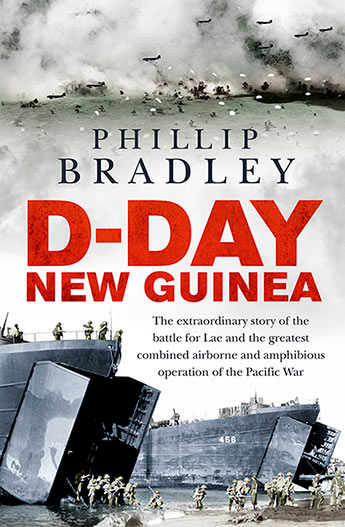One of the best ‘campaign’ histories I’ve read to date. The experience was greatly enhanced by references in the text to a specific map or sketch where a village, plantation, river, route, attack or withdrawal could always be located.

Paperback 336pp RRP: $32.99
Phillip Bradley, having lived for two years in Lae, examines the events from both sides in great detail, with personal anecdotes of the belligerents woven through many of the actions described. From the early patrols seeking information of Japanese strengths and dispositions, the reconnaissance patrols looking for potential river crossings and airstrips, the mind-boggling numbers involved in the logistics and planning for intended attacks and blocking operations, and the dilly-dallying at highest command level, leave the reader with very little time to ‘take a breath’.
Being the first truly aggressive Allied action in the South West Pacific, MacArthur was hell-bent on it being a total success. The planning was extremely thorough and the landing was to become a model for similar actions in the Pacific theatre and of course, Normandy nine months later. The lessons learnt from Operation Postern enabled effective fine-tuning that reduced casualties and effort in the future.
When Lae was entered, it was found to be unoccupied, but the lack of planning beyond the objective, that is, follow-up (exploitation) was not considered: resulting in over 6500 (75%) of the Japanese who occupied Lae escaping to Kiari on New Guinea’s north coast. Blamey had believed they were not capable of ‘escap(ing) the hardship of the formidable mountain tracks’.
Written (almost like a mystery novel) in an easy-going, yet with obvious authoritative style, this was difficult to put down. The text has a list of 19 maps and sketches, a useful list of abbreviations, Notes (between 40 and 60 for most chapters), a most comprehensive Bibliography an easily navigable Index, and is rounded out with a collection of black and white photographs.
This is an excellent work for anyone looking for further knowledge of the Second World War in the South West Pacific.
Reviewed for RUSI by Neville Taylor, March 2019
Contact Royal United Services Institute about this article.






